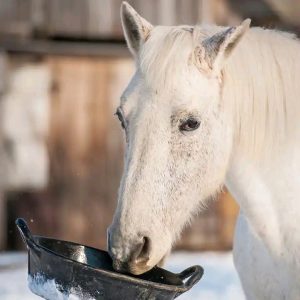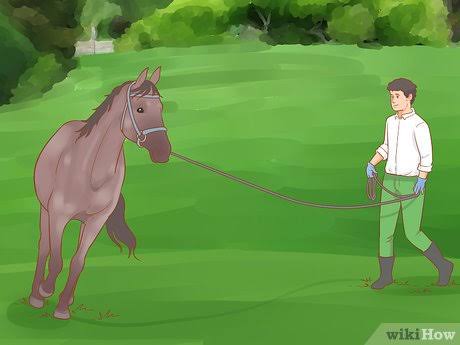A horse weighs usually between 500kg to 700kg. This depends on the kind of breed. Usually, most horses can vary in age depending on some factors. These factors include age, level of fitness, and the feeding pattern of the horse.
The horse’s weight can be calculated in different ways. One of the ways is by using a tape. This tape must be measured accurately to tell the real weight of the horse.
The information above is just the tip of the iceberg. Do well to read the remaining part of the article to see other information regarding a horse’s weight.
Why Is Checking A Horse Weight Essential?
Regular weight checks are necessary to assess the horse’s health and condition. Any variations from the usual weight can indicate that a horse needs a veterinarian visit and an assessment of its present nutrition and living conditions.
READ ALSO: How To Tell If Your Dog Is Sick
It is important to note that a horse that is either overweight or underweight might experience serious health issues.
That is why weight control is so important for the animal’s health; it may also help you design a diet and exercise regimen that is tailored to your horse.
Horses Weight and Age
The mean weight of a horse can also be approximated using its age. A newborn foal is commonly considered to weigh about 10% of its mother’s weight. Weanlings typically grow 1.98 – 2.43 pounds (0.9-1.1 kg) each day.
Yearlings should weigh approximately 50% of an adult horse’s weight. Two-year-old horses weigh approximately 90% of a mature person’s horse’s weight. Horses reach their whole body weight at four years old.
How To Know The Age Of Your Horse?
If you would like to know your horse’s approximate weight, you can use a particular tape or calculating procedure. However, keep in mind that the outcomes are always suggestive.
Sasimowski and Budzyński’s Formula Weight Checker
Sasimowski and Budzyński developed a formula for calculating a horse’s approximate weight. First, measure a horse’s girth, from the point of the joint that connects the shoulder to the buttocks. Then, calculate the girth of the horse’s chest behind its withers and elbow.
Finally, use the acquired values in the formula: horizontal is circumference of the trunk (cm) x girth of the chest (cm) x breed factor.
The formula can be written as C = O x P x W. O stands for chest girth, while P represents the body’s longitudinal circumference as measured from the outside regions of the shoulders joints and buttocks.
Both outcomes should be calculated to the closest 0.01. The last W is usually indicated in the weight of the horse. It is calculated using the formula W=C/O × P.
How Much Does A Horse Cost?
A horse might cost between $500 and $3,000, depending on its pedigree performance record, and decent manners.
The higher your budget, the more choices you have. Aside from the original acquisition of the horse, there are expenses for hay, feed, veterinary checks, training, and grooming.
How Much Does A Clydesdale Weigh?
The Clydesdale is a powerful, barrel-chested horse. It was initially bred to transport and undertake farm tasks.
The most prevalent Clydesdale colors are bay (a rich mahogany brown) and brown, however, some can be gray, black, or roan (bay with white hairs). This breed is distinguished by white markings on its face, legs, and, in certain cases, body.
In the front legs, the muscle known as the ulna is reduced in size, allowing the radius to carry all of the weight. The length and ulna have merged.
In the hind limbs, the pelvic bone is reduced in size, allowing the tibia to sustain all of the weight. The tibia and fibula are united.
Adult stallion Clydesdales weigh 17 to 19 hands (1.7-1.9 m or 5.7-6.3 feet). A male’s typical weight ranges from 771 to 998 kg (1,700-2,200 lbs.). Adult females grow 16 to 18 hands (1.6-1.7 m or 5.3-5.7 feet). A female typically weighs 680 to 771 kg (1,500-2,000 lb.).
Why Horses Need Enough Water?
Water is essential for horses since it aids digestion, body temperature regulation, waste disposal, heart health, mobility of the joints, and skin hydration.
Inadequate water consumption might contribute to health problems such as colic. Always give clean, potable water to preserve hydration and wellness.
Horses’ water demands vary with physical activity, childbirth, nursing, and environmental conditions; extra is needed for active, pregnant, or nursing horses, especially in hot or humid regions.
Proper hydration is vital for optimal performance, altering energy and endurance.
FAQ
How much does a full house weigh?
A full house weighs about 900 to 1300 kilograms. Small horses and ponies weigh about 100 to 500kg. However, other factors influence a horse’s weight. A Clydesdale horse weighs about 1800 kilograms.
Can a horse weigh one ton?
Yes. A horse can weigh anywhere from 200 kg to 1800 kg. However, this also depends on the season. During winter, the horse tends to grow faster than in the summer.
Can a horse carry a 100 kg person?
A horse can carry a 100 kg person. This is depending on the size of the horse. If the horse weighs 500kg, then it can carry a 100kg load.
How much do donkeys weigh?
A donkey weighs about 80kg to 480kg.
Conclusion
To conclude, the weight of a horse tells a lot about it. When a horse such as the American racehorse weighs less than 100kg, you might know the horse is sick. The more you learn about horses the better you understand.





One thought on “How Much Does A Horse Weigh?”